Selected Precision Effects at Range (SPEAR) Capability 3 is the name given to a Category A project (>£400m) to deliver a weapon described as;
A new 100 kg class weapon being developed to be the primary air to ground armament for the Lightning II (Joint Strike Fighter) from 2021; and optimised for internal carriage. SPEAR Cap 3 will provide the capability to destroy/defeat a wide range of targets at range, including mobile and relocatable targets, in all weathers, day and night, in all environments under tight rules of engagement.
SPEAR 3 is designed to provide the UK’s F-35B fleet with a weapon for attacks against integrated air defences and other targets, exploiting its increased stand-off distance to enhance the launch aircraft’s survivability. In other air interdiction missions against lesser capability air defences, it will be used to destroy the full gamut of likely targets on the ground and with some secondary capability against smaller targets at sea or in the littoral.
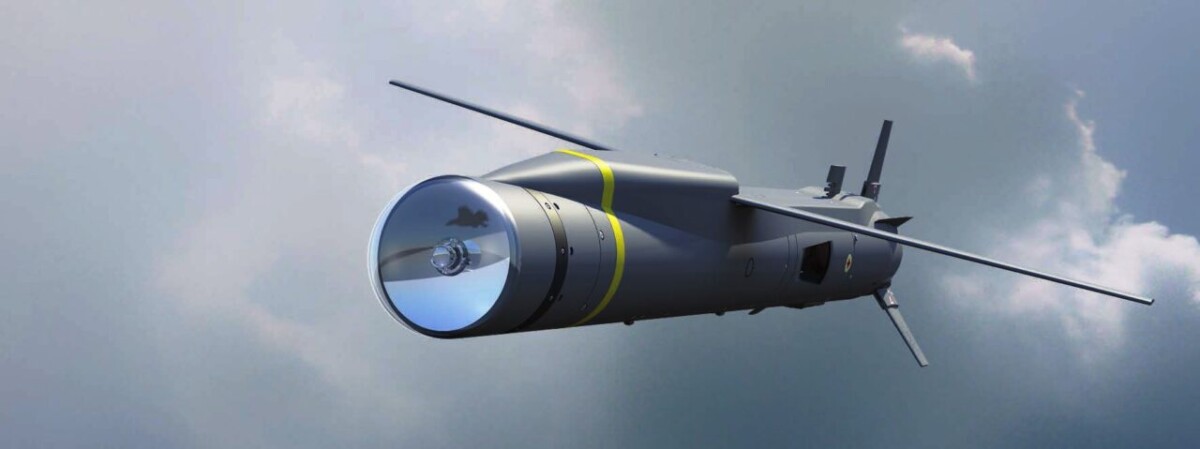
An Electronic Warfare variant is also in development.
SPEAR Capability 3 History
The SPEAR missile system is an MBDA Systems product.
The creation of MBDA came from a need to reduce the numerous missile vendors in Europe;
MBDA was created in December 2001 following the merger of the main missile systems companies in France, Italy and the United Kingdom. Each of these companies contributed the experience gained from fifty years of technological and operational success. The restructuring of the sector in Europe took its next step in March 2006 with the acquisition of LFK-Lenkflugkörpersysteme GmbH, the German missile subsidiary of EADS (now AIRBUS Group). This further enriched MBDA’s range of technologies and products, consolidating the Group’s world-leading position in the industry.
The diagram below shows the timeline.
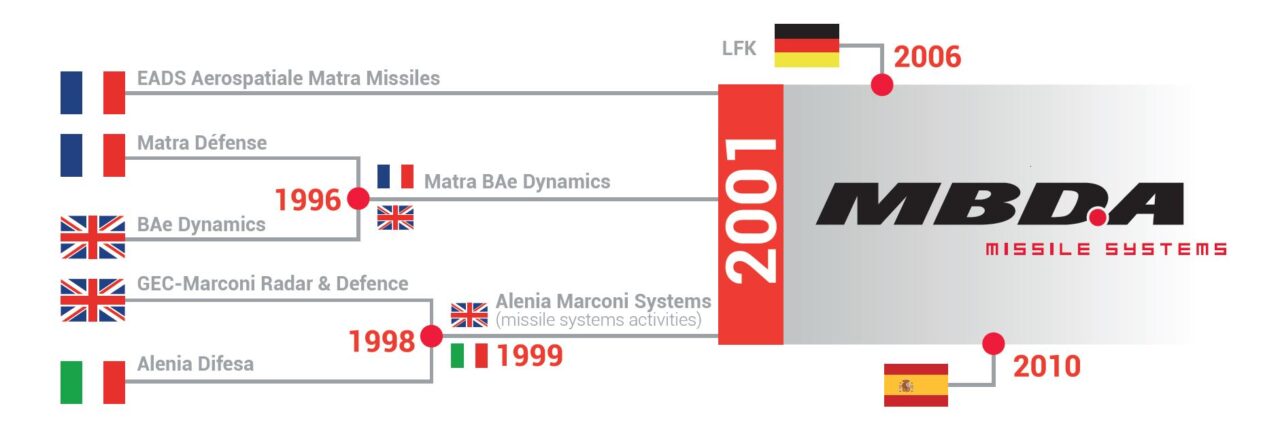
It is jointly owned by BAE (37.5%), Airbus Group (37.5%) and Leonardo (25%)
SPEAR is also a product of Team Complex Weapons, an MoD/Industry partnering arrangement that started in 2010. The term ‘Complex Weapon’ can include a number of different types but as a convenient shorthand, they can be thought of as guided rockets and missiles, the official term being ‘strategic and tactical weapons reliant upon guidance systems to achieve precision effects.’
The 2005 Defence Industrial Strategy concluded that complex weapons were a key strategic capability but the then-current commercial arrangements and industry structure would be unable to support that strategic capability without some form of MoD/Industry partnership and predictable requirement roadmap. In 2006, this new approach to managing the design, development, manufacturing and through-life support of complex weapons was announced, Team Complex Weapons, a collaborative partnership between MBDA (then owned by BAE, EADS and Finmeccanica (Leonardo) and the MoD. MBDA would be the lead industrial representative with other partners including Thales, Roxel and QinetiQ.
This was a smart move by the MoD and manufacturers, and one which I don’t think they get enough credit for. Moving outside the old-fashioned adversarial supplier-customer arrangement and towards a portfolio partnership, it has provided an environment where innovation can be accommodated and the adverse effects of commercial feast and famine reduced dramatically. In return for this assured work-stream, the industry would commit to a large block of efficiency savings over the initial ten-year timespan.
The Selected Precision Effects at Range (SPEAR) programme was in the concept phase by 2005, although internal work had started before that, as a means of defining a number of air-launched weapons as part of the Complex Weapons portfolio. They will all be air-launched stand-off weapons that can be used against a wide range of stationery and fast-moving targets day or night, and with the ability to defeat countermeasures.
It is defined as;
Selective Precision Effects at Range (SPEAR) is the Ministry of Defence’s (MoD) research and development request for highly accurate, beyond visual range re-targetable weapons which can receive target information updates over a data-link (network) in near real-time as part of the UK’s Network Enabled Capability (NEC)
SPEAR has been split into several capability numbers that have evolved since then, with a number of them informed by operational experience, Kosovo, and the Iraq conflict for example.
SPEAR Capability 1; Raytheon Paveway IV precision-guided bomb and subsequent improvements to include reduced collateral and penetrator warhead and enhanced capability against moving targets.
SPEAR Capability 2; a 50 kg class powered missile, eventually Block 3, Brimstone 2, then Brimstone 3
SPEAR Capability 3; a longer-range 100 kg class weapon with the ability to be re-targeted in flight using two-way data links.
SPEAR Capability 4; upgrades to Storm Shadow to sustain it to its out-of-service date
SPEAR Capability 5; a longer-range replacement for Storm Shadow
In 2006, Lockheed Martin positioned their Surveilling Miniature Attack Cruise Missile (SMACM) to meet the Capability 3 requirement, but this was not taken forward.
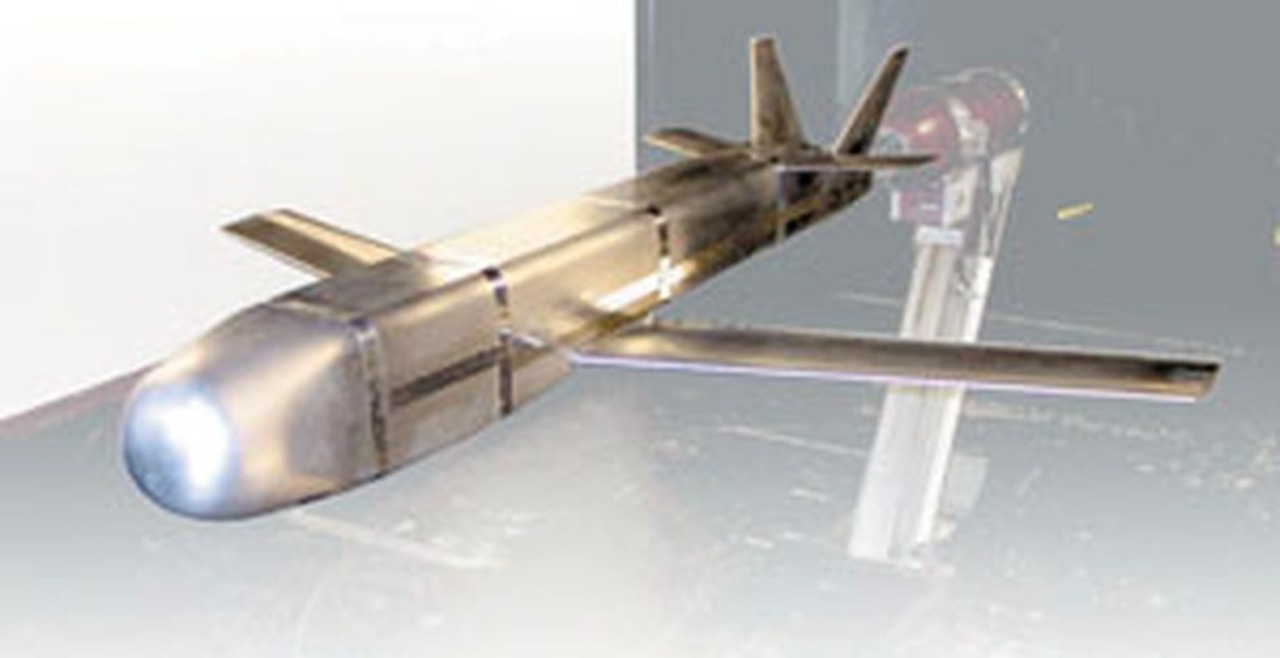
By 2010, the Ministry of Defence (MoD) had signed a long-term partnering agreement with MBDA called the Initial Portfolio Management Agreement (PMA-I), cementing the arrangements and the £600million per year complex weapons enterprise.
The key objectives of the portfolio partnership were a desire to maximise commonality, promote the reuse of subcomponents, reduce development times improve collaboration with European partners. Non-MBDA/Thales weapons were not included in the portfolio agreements, the Raytheon Paveway IV, Boeing Tomahawk cruise or Hellfire missiles for example. It also excluded infantry weapons such as Javelin and NLAW.
As is often the case, a number of feed-in research programmes informed the requirement for SPEAR Capability 3, the first of these was the Sensor to Effect Phase 2. The DSTL/QinetiQ/MBDA S2E2 prototyped a networked weapon based on a Brimstone missile to employ a data link, GPS module and data fusion processor to deliver high levels of precision at stand-off distances. The data link was the result of another programme, Weapon Data link 2.
This integrated Link 16 terminals in a simulated environment using the Time Sensitive Target Test Bed (TST-TB). Both these programmes coalesced in the 2010/11 timeframe and culminated in test firings from an RAF Tornado GR.4. The final requirement for SPEAR Capability 3 was an internal carriage in the UK’s future Joint Combat Aircraft (JCA), the Lockheed Martin F-35B Lightning II.
At the same time as the partnering agreement was confirmed, the MoD also placed a contract for a number of complex weapon projects;
As part of the agreement, the MOD has placed a contract valued at some £330 million to demonstrate and manufacture both the fire shadow loitering munition which will be able to be used in operations by the British Army in Afghanistan and, using a development of the current Brimstone anti-armour weapon, the second element of the selective precision effects at range (SPEAR) programme for use by the RAF on Harrier GR9 and Tornado GR4 including on current operations. The contract also includes further work on the future local area air defence system and on future components of the SPEAR programme.
Emphasis added.
SPEAR Capability 3 cleared its initial design review with the MoD in 2011, commenting on this, the MBDA UK Managing Director said;
We’re now focused on the final two years to conclude the assessment phase, which, in 2013 and early 2014, will include subsystem and first flight trials of that weapon
MBDA revealed more details at Farnborough in 2012, describing it as both a step change and a mini cruise missile. Although several final design considerations had yet been finalised, the basic shape and requirements included a turbojet and fold-out wings, the ability to carry 4 internally on the F-35, a multimode seeker and a data link to enable mid-course guidance.
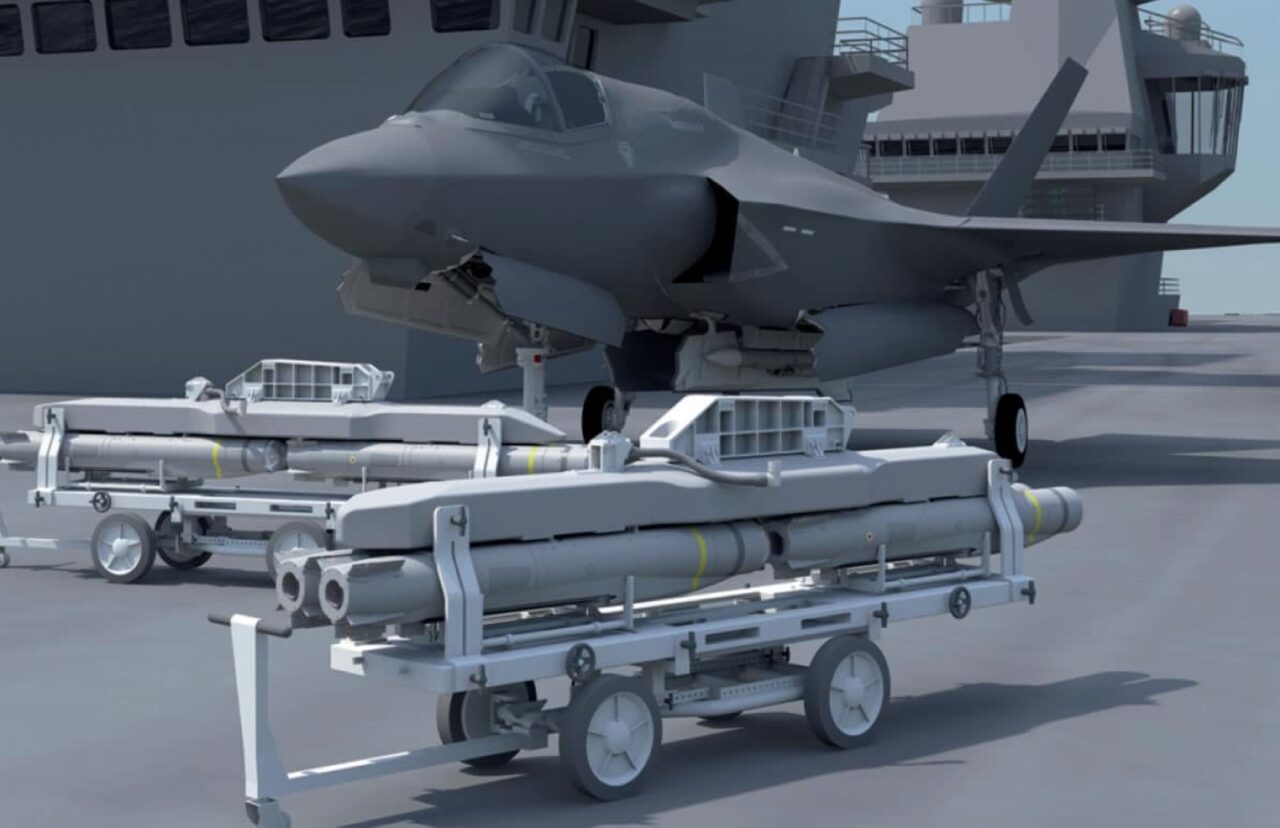
This initial concept has since evolved, the location of control surfaces and body shape for example, and the UK’s reversion to the STOVL F-35B also required some changes to the launch rail.
The SPEAR Capability 3 Assessment Phase also included Capability 2 block 2 and Sea Ceptor, so when the National Audit Office reported, the individual component costs were not clear. The real issue with SPEAR Capability 3 at the time was that the MBDA version was not the only game in town.
Raytheon has their Small Diameter Bomb (SDB) Increment II (GBU-53). There is no doubt SDB-II has less capability, it is a glide-only weapon and thus has a lower time to target (which enables the launch aircraft with SPEAR to ‘get the f**k out of dodge’ sooner) and SPEAR has a longer range (greater stand-off distance). However, the SDB-II has a tri-mode seeker (SAL, IR and MMW) like SPEAR and a larger warhead, and it was likely cheaper.
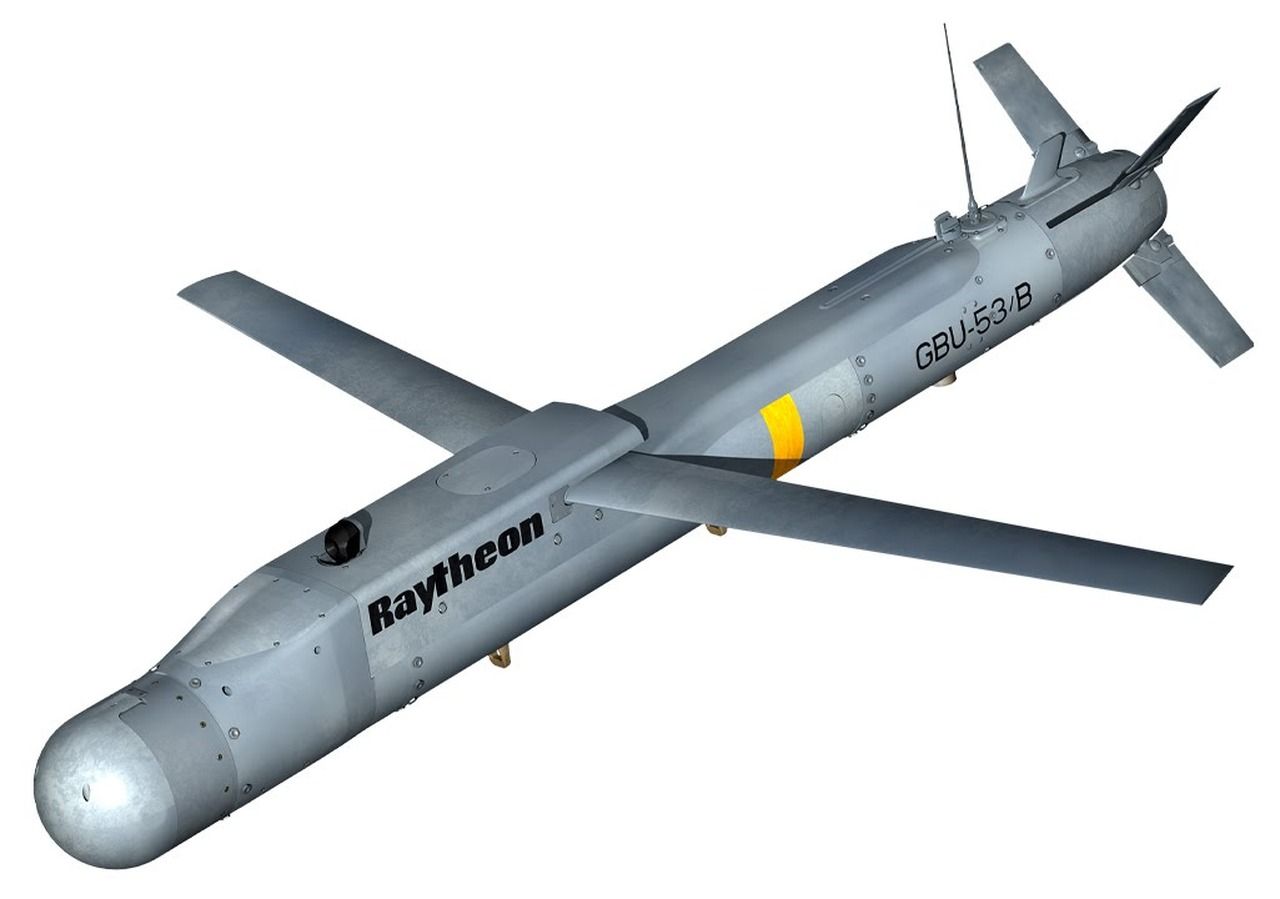
This was the dilemma for the MoD, buy off the shelf or develop the MBDA system, but the underlying conditions that drove the creation of the complex weapons partnership remained, the MoD had a choice of sticking to what it agreed to or abandoning the agreement.
Raytheon went on the public relations offensive and hinted that a UK SDB-II could be made at their UK manufacturing facility.
The 2013 National Audit Office Major Projects Report (published in 2014) described how SPEAR Capability 3 was still in Assessment Phase and the forecast cost of this was £139m, although as above, this was shared with other projects. MBDA released further imagery and video.
As 2013 came to an end, the Surface Attack Project Team presented a Review Note to the Investment Approvals Committee seeking approval for an increase in the cost and time of the project’s Assessment Phase, after further clarification work in 2014, this was approved in February 2015.
This Assessment Phase extension effectively signalled the MoD’s choice between it and the SDB-II. The MoD confirmed that SDB-II did not meet a number of Key User Requirements, but Main Gate would be deferred until 2018, by which time the extended Assessment Phase should have concluded.
In December 2015, as a follow-up to the 2010 Lancaster House agreements, France, and the UK jointly signed contracts for the development of the Sea Venom missile that will replace Sea Skua in both nations’ armouries. Of more interest was confirmation that work would continue with the creation of a number of ‘Centres of Excellence.
- France; weapon controllers and test equipment
- UK; data links and actuators
These four would be followed by locations for complex warheads, guidance and navigation systems, algorithms and software.
Initial flight development work was carried out on the Typhoon.
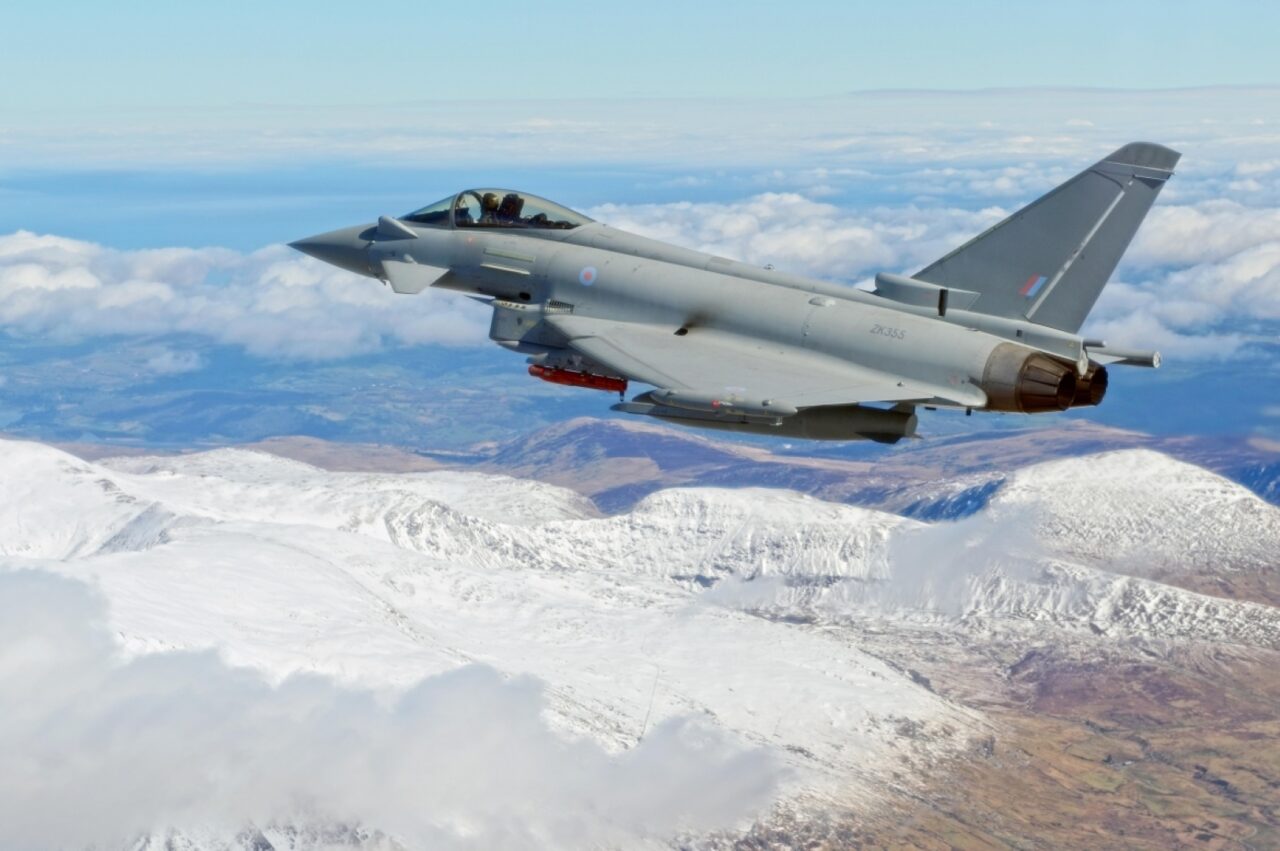
A Main Gate decision on the Demonstration and Manufacture phase was not planned until 2018, but several media outlets had reported in early May that MBDA were about to be awarded a £411 Million contract to develop SPEAR Cap 3. and on the 18th of May 2016, the MoD announced the next stage of development for SPEAR Capability 3
The Ministry of Defence has awarded a £411 million contract to develop a new missile for the UK’s future F-35B supersonic stealth aircraft.
The contract secures around 350 highly skilled missile engineering jobs across MBDA’s sites in Stevenage, Bristol and Lostock, with an equivalent number of jobs in the wider supply chain, and will draw on engineering and manufacturing expertise from companies across the UK. Spear 3 is from the same family of weapons as Brimstone, currently being used by the RAF to combat Daesh in Syria and Iraq, but it packs a bigger punch and has a significantly increased range.
The contract, with MBDA, will enable four years of critical design and development work which will tailor the weapon for use within the internal weapons bay of F-35B, the world’s most advanced combat aircraft. It is being designed specifically for F-35B Lightning II operations launched from HMS Queen Elizabeth and HMS Prince of Wales, the Royal Navy’s two £3 billion aircraft carriers.
The £411 million contract award follows an initial £150 million assessment phase and, if successful, it is expected that Spear 3 will enter service in the mid-2020s
It was later announced that the first test-firing had taken place in March 2016;
MBDA’s Spear missile, intended primarily for the UK’s F-35 fleet but also for Typhoon, has been fired for the first time. The trial was undertaken in March at the Aberporth range in the Irish Sea from a standard production Typhoon (aircraft BS116), flown by BAE Systems chief test pilot Steve Formoso. During the test, the missile righted itself from its inverted carriage position, deployed its wings, started its motor, made a number of maneuvers and flew to a predetermined point of impact
Paul Wester, SPEAR Programme Director, explained the significance of the test firings;
This trial systematically demonstrated an advanced degree of maturity and technical progress that is unusual in an Assessment Phase. The trial had to achieve a variety of “firsts” for SPEAR including the safe separation from the jet, commencement of powered flight, the manoeuvre whereby it rolled and opened its wing in free flight, navigation and the final simulated precision attack. All those actions were a challenge with a new airframe that had never flown and we are building on this very successful foundation with the weapon development phase.
No news on Typhoon integration but several outlets have reported it is an aspiration and will hopefully use the new three-round common launcher for a total of twelve carried munitions.
We’ve flown SPEAR on Typhoon, launched it, proved the separation, the propulsion, the guidance and the final phase. That gives us the potential to integrate SPEAR onto Typhoon as well. It was a trials fit on Typhoon, but there was nothing on there we wouldn’t foresee taking forward into a real fit. We would need to go through a more rigorous qualification and certification for a production run, but there are no show-stoppers in there that we can see now that we’ve done the trials fit.
So although SPEAR Cap 3 has been dropped from Typhoon over the sea, integration would require more detailed and demanding activity.
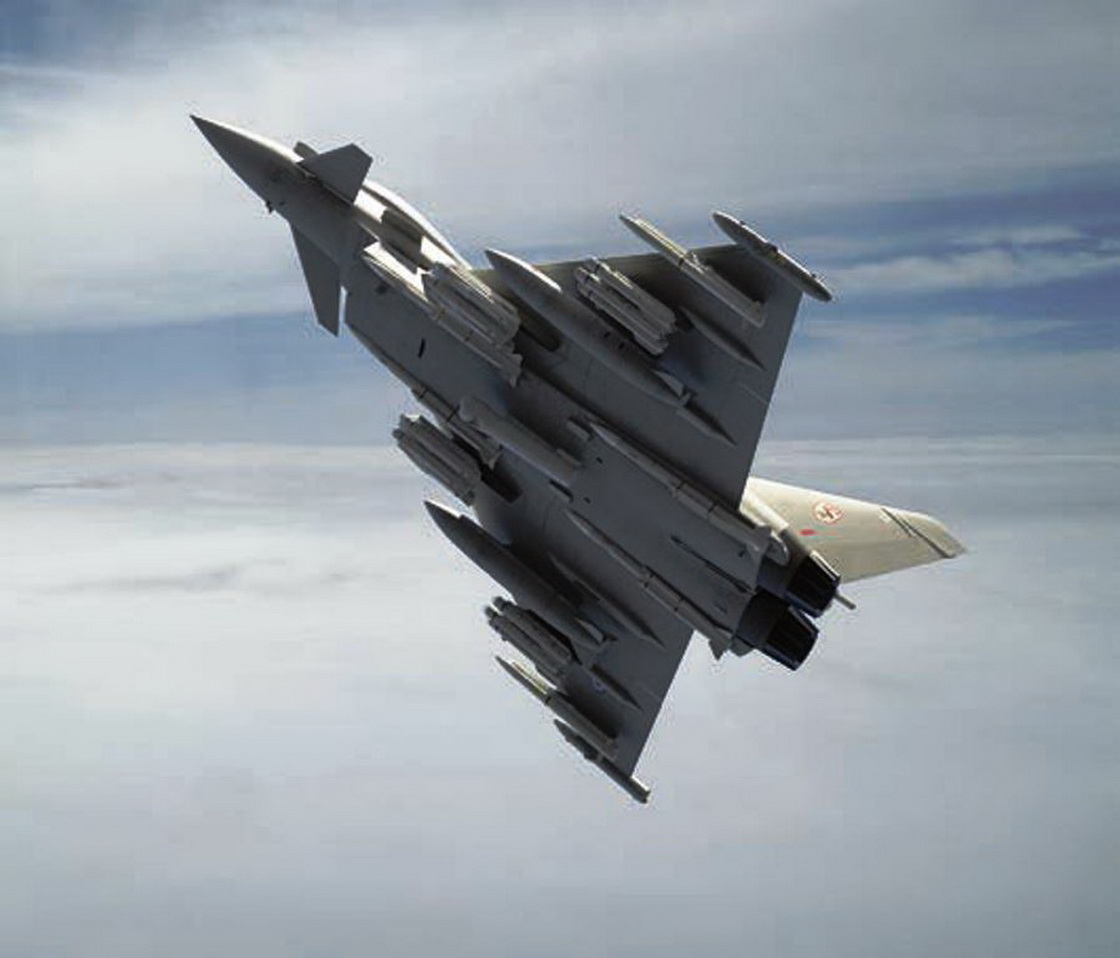
MBDA awarded a contract to L3 Harris to complete development work on their Scorpion Eject Release Unit (ERU) to enable the carriage and release of four SPEAR weapons per F35-B bay. MBDA also showcased its Smart Glider munition at the Dubai Airshow in 2017, this being perhaps a closer analogue to SDB-II than SPEAR.
In July 2018, the Secretary of State for Defence opened a new MBDA manufacturing and development facility in Bolton
In March 2019, BAE announced they had been awarded a contract by Lockheed Martin to start work on the integration of SPEAR and Meteor missiles onto the F-35B
This is a significant milestone for the UK Combat Air’s capability. This initial package of work officially commences the integration of Meteor and SPEAR and will enhance the operational capability of the UK’s Lightning Force in the future; it is also a positive step for the wider F-35 enterprise as it adds additional capability choice for international customers. MBDA’s integration team have worked well with our BAE Systems and Lockheed Martin colleagues and we plan to build on this excellent foundation into the future on this follow-on modernisation work
MBDA also released details on an Electronic Warfare variant of SPEAR in development with Leonardo under an MoD Technical Demonstration Programme contract.
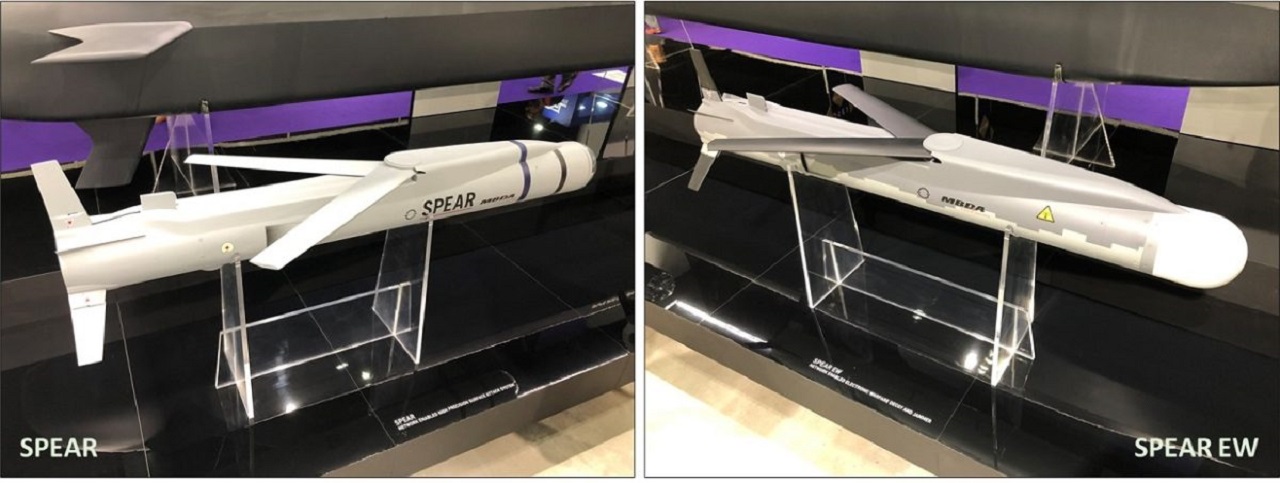
Commenting on the new variant, MBDA Director of Sales and New Business, said;
SPEAR-EW is a revolutionary new capability that, alongside the existing SPEAR3 weapon, marks a fundamental change in the ability of friendly air forces to conduct their missions despite the presence of enemy air defences. Our vision for SPEAR is to create a swarm of networked weapons able to saturate and neutralise the most sophisticated air defences. Adding SPEAR-EW to the family alongside our existing SPEAR strike missile demonstrates the principle of introducing complementary variants to the SPEAR family that will add significant capability and force multiplication without the need to repeat the platform integration. We have an exciting roadmap of variants, spirals and technology insertions in the pipeline to further enhance the family as we move forward
An unpowered version, called SPEAR Glide, was also shown, although this was an MBDA concept only, and during the year there were some events that featured SPEAR in the context of the future combat cloud and Tempest programmes.
In early 2021, the MoD awarded MBDA with a seven-year £550million Demonstration and Manufacture contract for the SPEAR missile system.
Known as SPEAR3, the next-generation missile can travel long distances at high-subsonic speed and over the next decade will become the F-35’s primary air-to-ground weapon. At 1.8 metres long, the missile system has a range of more than 140-kilometres and, powered by a turbojet engine, can operate across land and sea, day or night, to overpower enemy air defence systems, while the pilot and aircraft remains a safe distance away. Its ability to attack moving targets will enhance the UK’s future combat air capability and provide immense lethal capability to the Queen Elizabeth class carrier strike group.
Guided firings from a Typhoon were planned to start within 18 months of this contract award, with missile and launcher production starting in 2023.
Costs to date have been;
- Concept Phase; part of a wider £330m contract including other systems so difficult to determine exact costs
- Assessment Phase I; £150m
- Assessment Phase II; £440m
- Development and Manufacture; £550m
There will have been some costs associated with lead in research programmes, and it is not yet clear if the Development and Manufacture phase includes Block 4 F-35B integration costs, but taken in the round, SPEAR 3 is a Billion Pound system, not dissimilar to the total cost of Storm Shadow.
Final manufacture quantities of the missile have not been disclosed, making unit cost calculations impossible.
There are no plans to integrate SPEAR3 onto anything apart from the F-35B at this stage.
In July 2021, the MoD awarded a project contract for the Co-operative Strike Weapons Technology Demonstrator (CSWTD).
In 2022, the MoD released the 2021 Equipment Plan, in which it described a delay to the In-Service Date of the F-35B to 2025 instead of 2023.
It also confirmed entry into service for SPEAR would be in 2026, this later slipping to 2028.
The first test firing from a Typhoon was slipped to 2023, at the same time the Government Major Projects Portfolio (GMPP) moved the project into RED, with the MoD noting this was caused by
challenges with resourcing sufficient suitably qualified and experienced people across the programme and delivery teams, and within industry
Efforts continued to get the programme back on track.
The MoD awarded MBDA with an additional contract in September 2023 to accelerate development on SPEAR-EW, the stand-in jammer variant.
The Marina Militare Italiana revealed plans to purchase SPEAR in June 2024
News of the first successful guided firing against a target of SPEAR was released in mid-November 2024, from an RAF Typhoon, at a test range in Sweden.
Royal Navy and Royal Air Force pilots will benefit from a cutting-edge new cruise missile, following the first successful guided firing trial of the SPEAR missile.
SPEAR, which is a next generation turbojet-powered miniature cruise missile, successfully completed the trial after being fired from a BAE Systems-operated Typhoon jet at Vidsel range in Sweden. This most recent trial was the first time the weapons system had been fired against a target, signifying a major leap forward in the programmes development.
Several images of the test event were released by the MoD
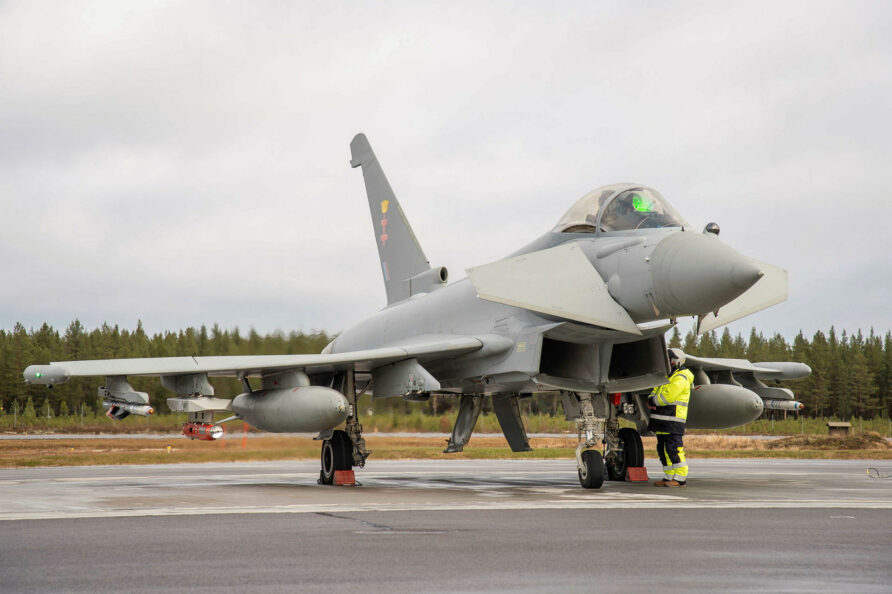
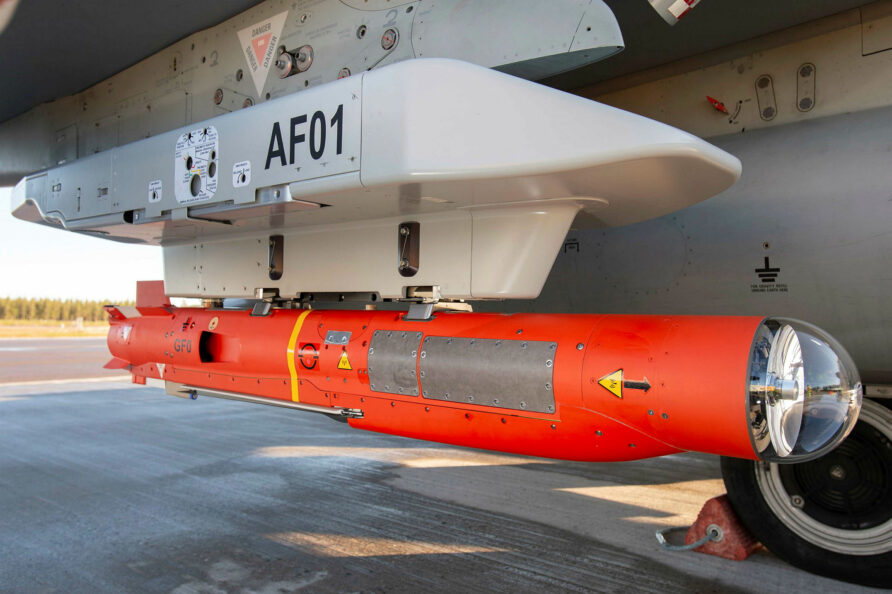
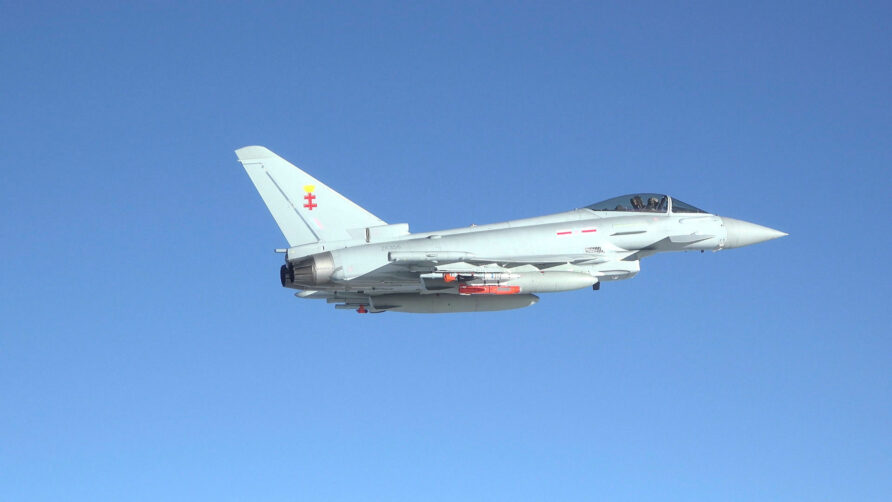
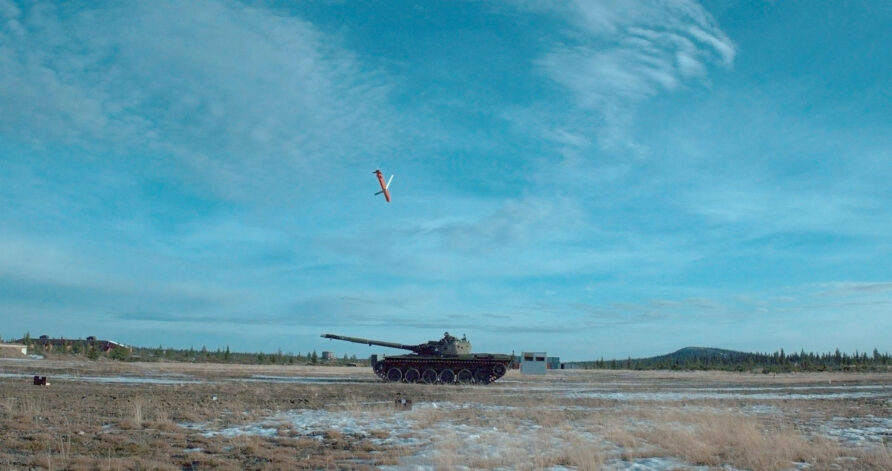
Delays to SPEAR in service date continued to be subject to speculation, including delays to the F-35B Technology Refresh 3 (TR-3).
Aerospace Global News reported on the issue in November 2024
In fact, AGN understands that the issue was with the launcher for Spear, and not the weapon itself, and that integration on the F-35 was ‘complicated’ by Lockheed Martin’s inability to provide adequate data to MBDA, forcing the company to provide a launcher with multiple ‘mode’ options to cover all bases. Because some of these modes were redundant, Lockheed Martin judged the launcher to be outside specifications! These extraneous modes will now be removed from the launcher.
Work continues
Before reading on, would you mind if I brought this to your attention?
Think Defence is a hobby, a serious hobby, but a hobby nonetheless.
I want to avoid charging for content, but hosting fees, software subscriptions and other services add up, so to help me keep the show on the road, I ask that you support the site in any way you can. It is hugely appreciated.
Advertising
You might see Google adverts depending on where you are on the site, please click one if it interests you. I know they can be annoying, but they are the one thing that returns the most.
Make a Donation
Donations can be made at a third-party site called Ko_fi.

Think Defence Merch
Everything from a Brimstone sticker to a Bailey Bridge duvet cover, pop over to the Think Defence Merchandise Store at Red Bubble.
Some might be marked as ‘mature content’ because it is a firearm!
Affiliate Links
Amazon and the occasional product link might appear in the content, you know the drill, I get a small cut if you go on to make a purchase
SPEAR Capabilities
I have seen it described in official publications as SPEAR, SPEAR CAP 3, SPEAR3, SPEAR Capability 3 and even different versions of what the S in SPEAR means, selected or selective. The latest just seems to be SPEAR3, although MBDA describes it as just SPEAR, so take your pick!
MBDA perhaps doesn’t like these characterisations, given the scale of the SPEAR development, but many have described it as either a longer-ranged Brimstone or a jet-powered SDB-II (Stormbreaker).
As SPEAR has developed over the last couple of decades, its capabilities and use cases have also changed. Undoubtedly, the requirement stemmed from the RAF’s experience in Kosovo, but since then, it has evolved into a class of weapons with enormous development potential.

In addition to the above, SPEAR3 has a sophisticated Insensitive Munitions warhead from TDW Gesellschaft für verteidigungstechnische Wirksysteme mbH (TDW GMbH) and a variant TJ-150-3) of the Whitney AeroPower (Hamilton Sundstrand) TJ-150 turbojet that is also used on the MALD and MALD-J systems.
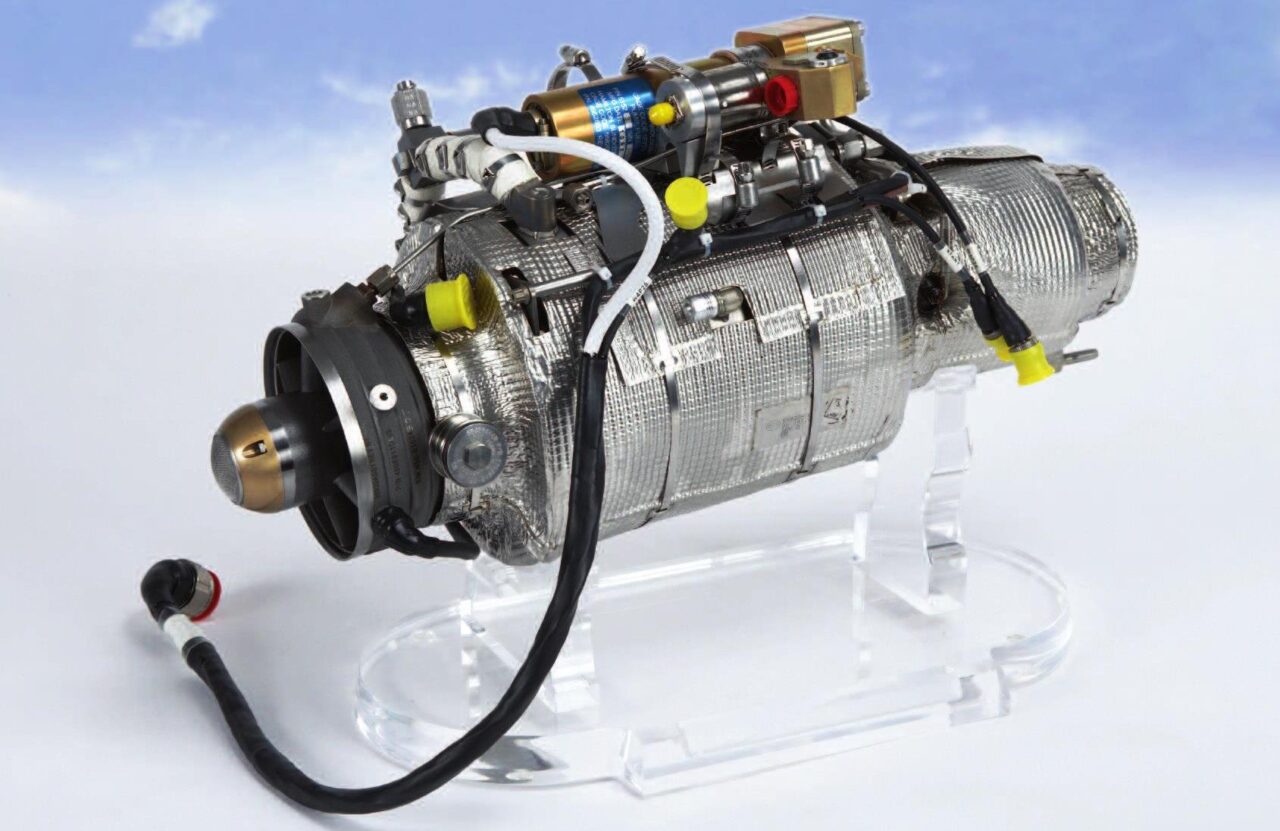
The range is, of course, not in the public domain, but various outlets have reported it is exceeding 140 km, as does the latest graphic from the MoD. The turbojet propulsion is used to provide extended range, headwind resistance and additional flexibility against targets in difficult-to-reach areas. It also provides a much shorter time to target than a glide weapon, which improves the survivability of the aircraft.
The two-way data link and combined RF imaging sensor and semi-active laser (SAL), together with powerful onboard processing and a tunable warhead, and a GPS/INS guidance system from Collins Aerospace provide maximum flexibility, allowing a broad range of targets to be attacked in a range of weather and threat conditions.
It can even be controlled from the ground using a Link 16 terminal and has high levels of shelf and carriage life, and much-improved maintainability compared to other missiles.
SPEAR really is at the cutting edge, with every single optional extra box ticked.
The modular approach taken by Brimstone 2 and ASRAAM was also used on SPEAR, MBDA has claimed this would allow SPEAR to be modified to include a booster motor that would allow it to be used in the land attack and counter Fast Inshore Attack Craft (FIAC) role.
MBDA released a graphic a few years ago showing a concept for a Common Anti-Surface Modular Missile (CAsMM) that used the same launch cell as the Common Anti-Air Modular Missile (CAMM).
Vertical launch SPEAR remains an interesting option for land attack from RN vessels equipped with Sea Ceptor or Mk41 VLS, or perhaps even smaller vessels, and although not on the development roadmap yet, helicopters and UAS remain potential launch platforms.
Despite this, the UK is only contracted so far for F-35B carriage. The F-35B is not scheduled to carry the SDB-II until 2022 as part of Block 4a software and SPEAR3 will be in the Block 4 software release on the F-35 programme, alongside Meteor, although Meteor will be the highest priority given the UK’s F-35B’s will have Paveway IV as part of its threshold integration.
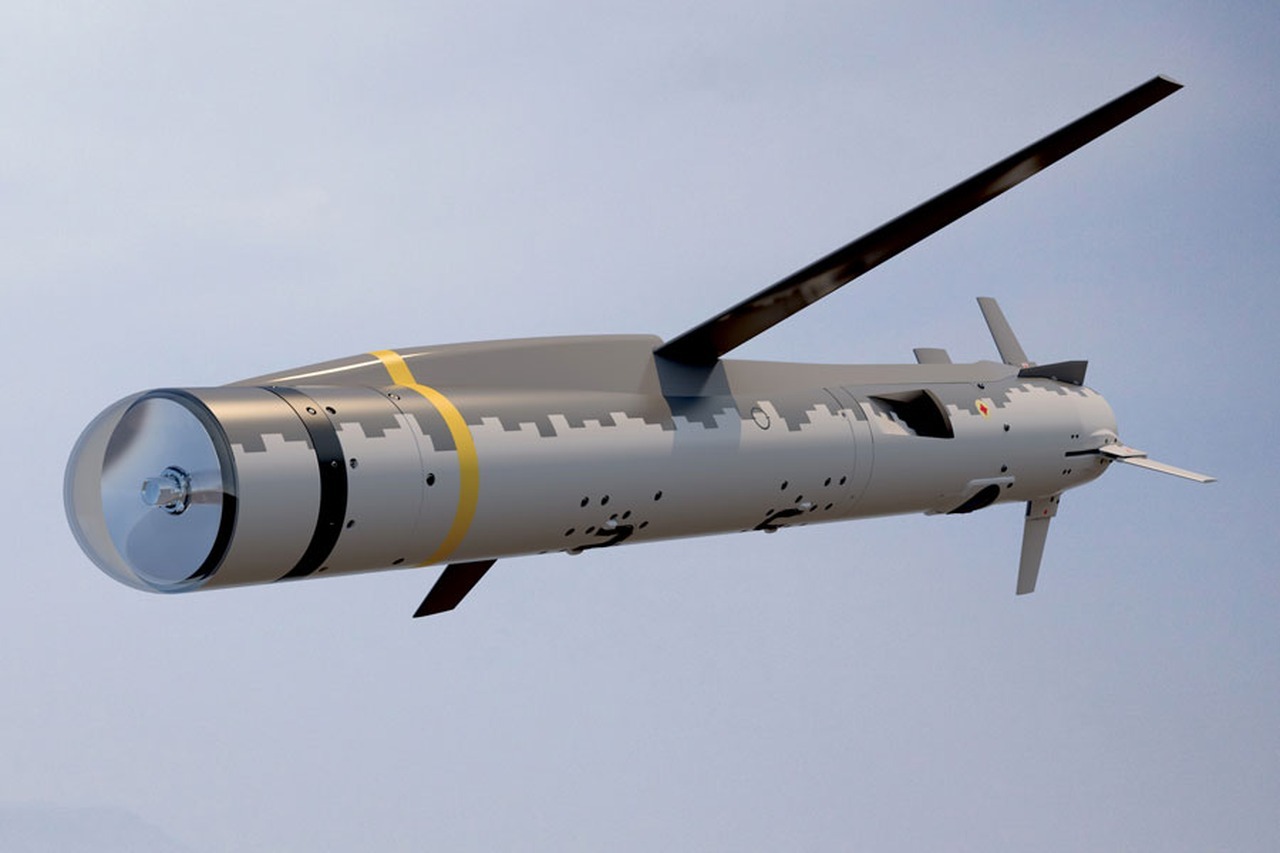
The latest image below demonstrates, I think, how SPEAR3 has evolved since its inception, in a word, swarms.
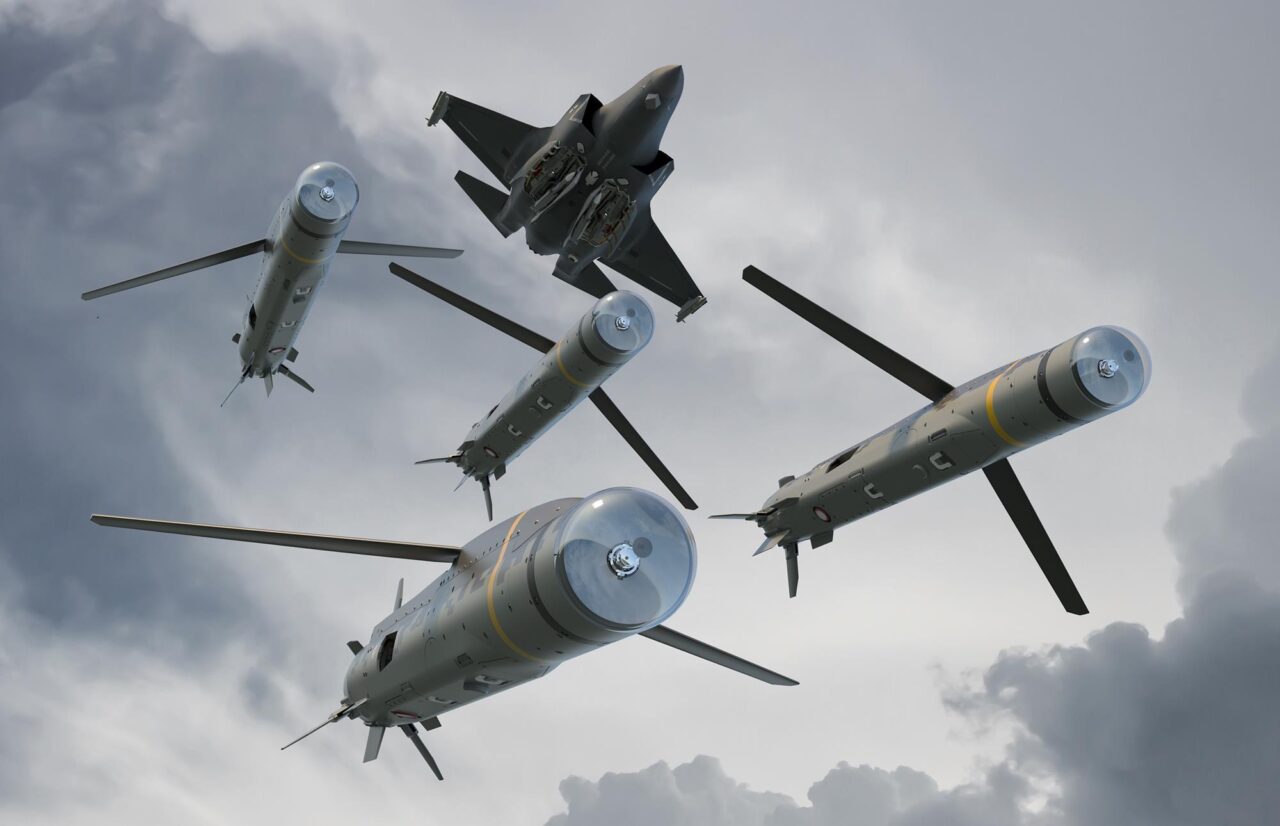
Recent graphics would also indicate a desire to integrate SPEAR onto Typhoon, especially the EW variant. The EW variant uses the SPEAR body but replaces the warhead and seeker with more fuel and an electronic package derived from the world-leading Britecloud EW decoy.
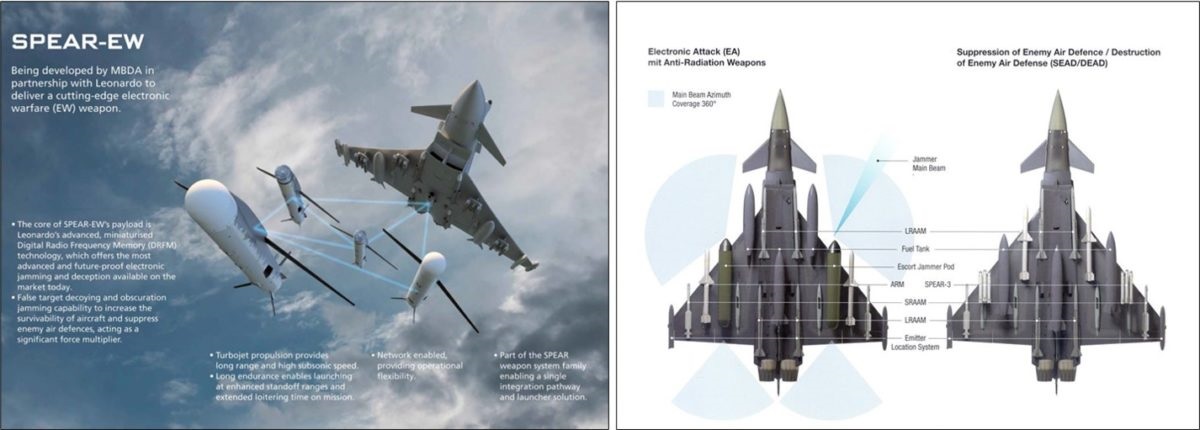
SPEAR-EW has been reported as having three times the range of the normal version whilst retaining physical compatibility to ease aircraft integration, i.e. we won’t need to pay twice for integration as we would have if selecting something like the MALD-J/X.
Eurofighter describes it as
SPEAR EW acts as a stand-in jammer which greatly increases the survivability of the Eurofighter by suppressing enemy air defences. It can be used for multiple different types of EW. At one end of the spectrum it could simply jam a radar, effectively blinding it, and at the other it could mimic 100s of different objects, therefore creating a mask.
This flexibility gives a pilot a range of options. Blinding a threat radar is an overt action but they can call on more subtle effects. For example, SPEAR EW can be used to create a decoy by making you appear bigger or appear as though there are 50 targets so that it’s impossible for an adversary to determine which is the real target.
Alternatively, you might want to encourage the threat target to start shooting which would enable your forces to find it. Another option could be to get the adversary to train their fire at an imaginary target and therefore allow you through their defences.
SPEAR EW isn’t simply restricted to land targets. It could be used for maritime strike to blind or confuse a ship.
As both the threat and likelihood of use against triple-digit SAM’s will likely increase, the ability to penetrate anti-access bubbles will become paramount to operational success, it is here where the combination of aircraft and systems like the F-35 and SPEAR will become invaluable. And the combination is the key, operations have always, and will always, be a team sport, having multiple means, both electronic and with things that go bang (I refuse to say kinetic!), will provide the best set of options for the mission.
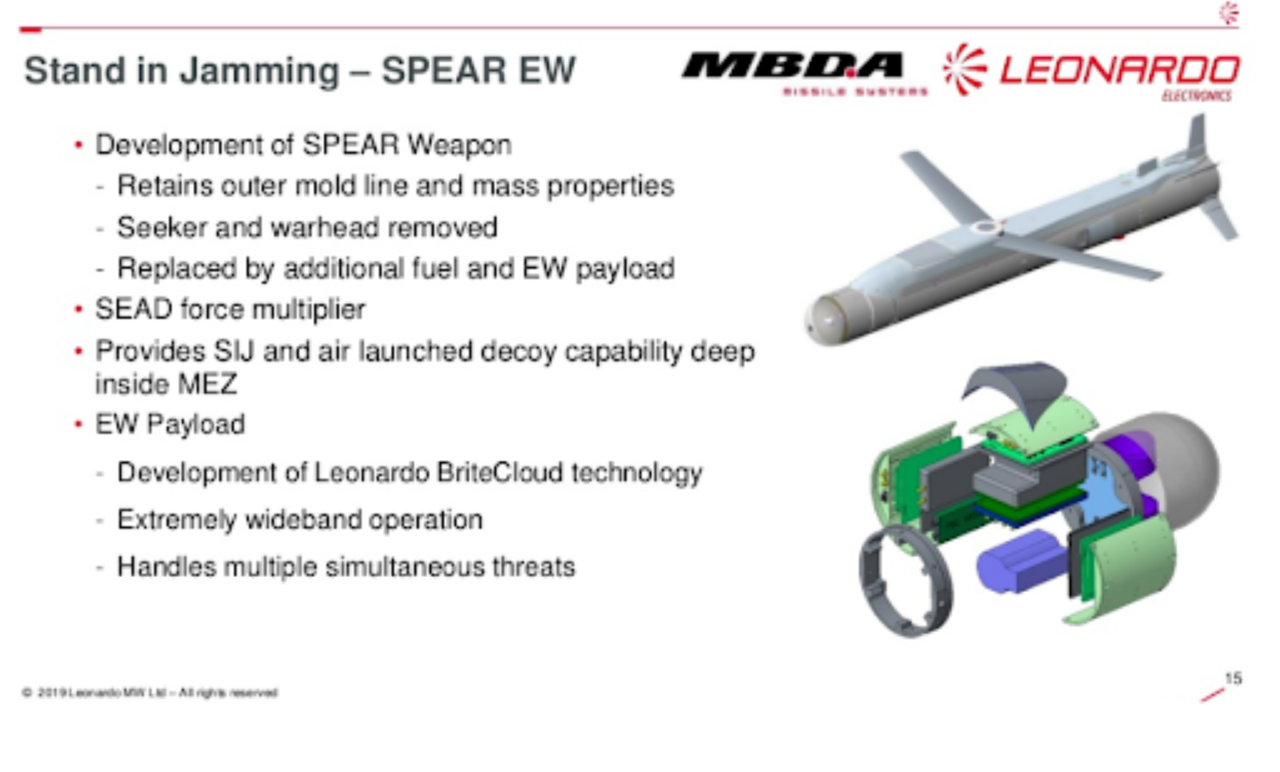
Germany is also looking very closely at SPEAR for use in the SEAD/DEAD role, in combination with new variants of the Typhoon CAPTOR radar and other electronic systems. The UK is well-placed here also, having the low observability of the F-35B, internal carriage of SPEAR, and options for very high payloads of SPEAR missiles on the Typhoon creates a very potent combination.
Put the ability to mount F-35B operations from the Queen Elizabeth aircraft carriers or forward locations together with that, and it gets even better.
As Tempest becomes a reality in the following decades, later versions of and successors to SPEAR will have built on this early development and possible operational experience of using swarms of different variant ‘mini-cruise missiles’. It is certainly possible that we will see SPEAR, SPEAR-EW and SPEAR-GLIDER in service in the next decade or so, with SPEAR leading the way on the RAF/RN’s F-35B fleet as a lead into Tempest and FCAS.
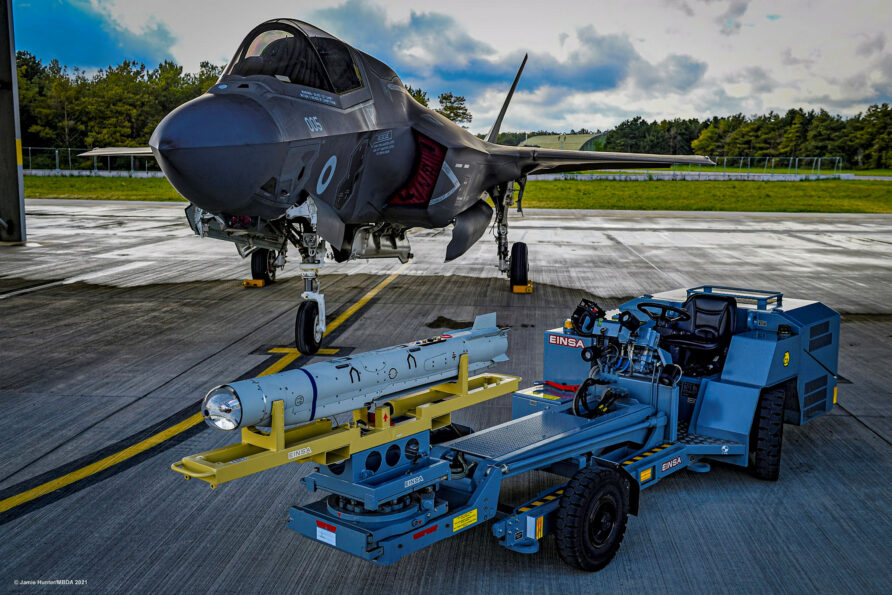
Will SPEAR achieve export success in a way that Brimstone didn’t, that is a tough question, it can certainly address the F-35 marketplace without repeating complex integration activity for each user, but the US market does not look like it will become more open to non-US systems any time soon. If it is eventually integrated into Typhoon, there is a market access window before Tempest and FCAS materialise.
But the real question remains, is it SPEAR, SPEAR 3, or SPEAR Cap 3 :)
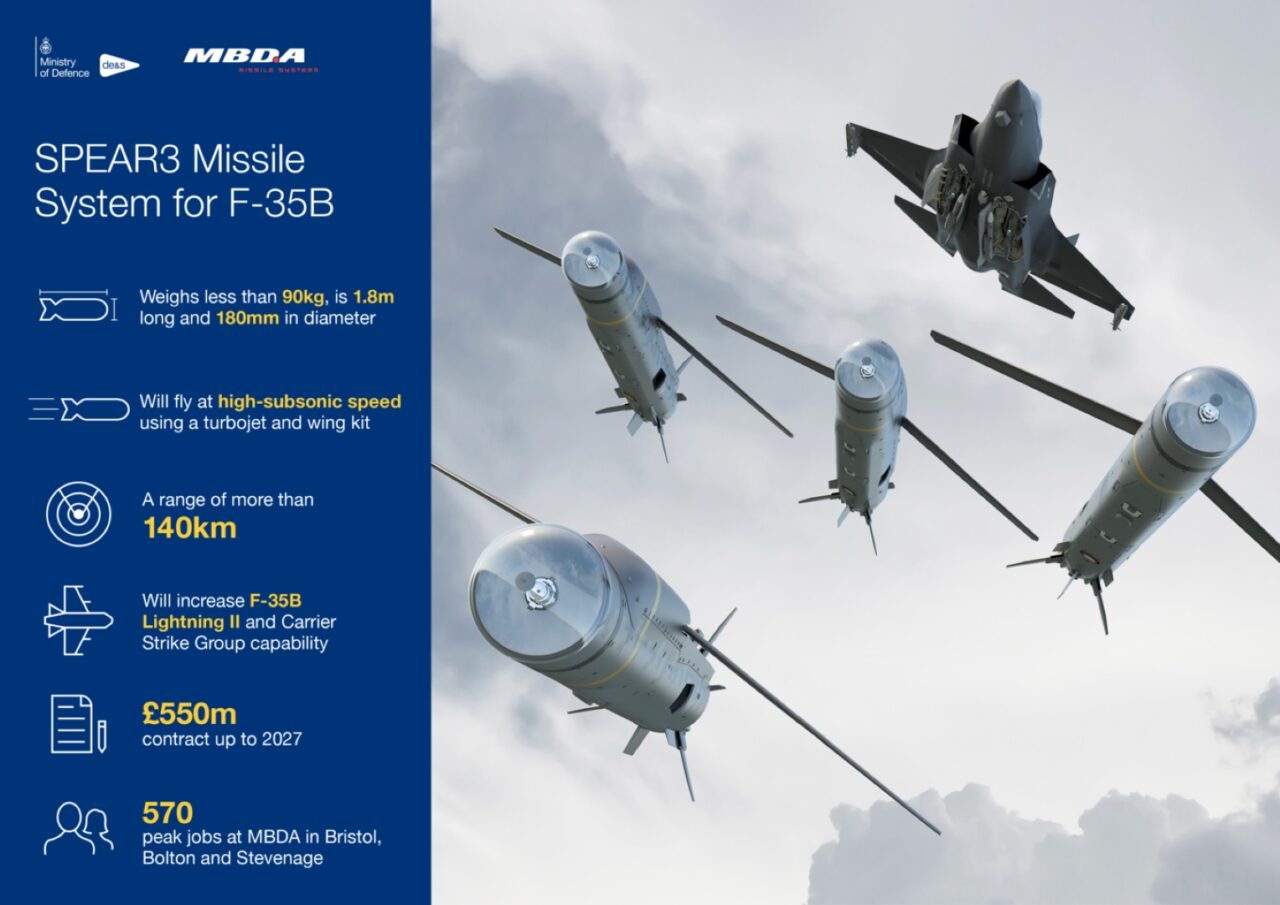
Click HERE to read about other UK Complex Weapons
Change Status
| Change Date | Change Record |
| 01/03/2017 | Initial issue |
| 16/07/2021 | Format update |
| 29/09/2022 | General update |
| 16/10/2022 | Updated ISD prediction |
| 08/08/2023 | Minor update |
| 02/10/2024 | Added potential for Italy purchase of SPEAR |
| 17/11/2024 | First test firing |
Discover more from Think Defence
Subscribe to get the latest posts sent to your email.


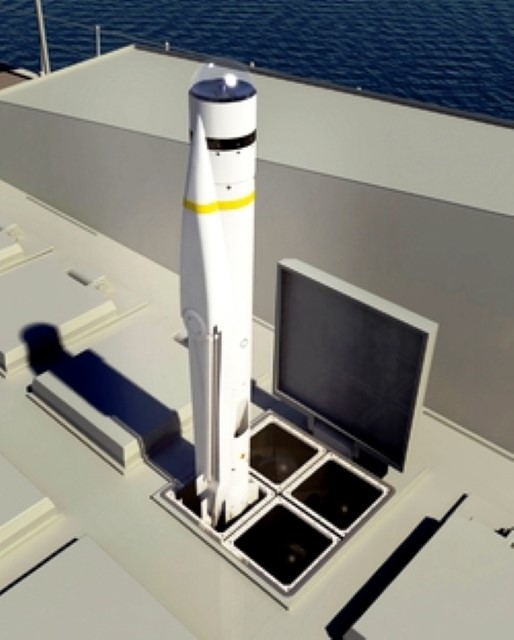
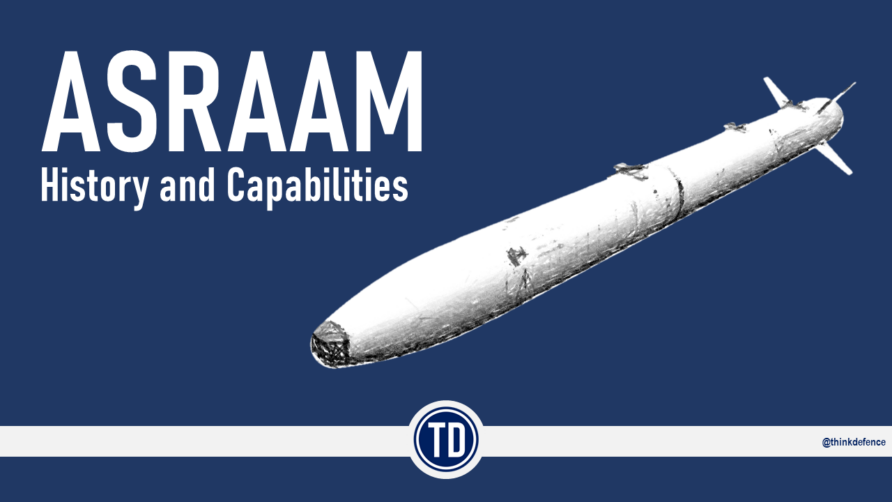
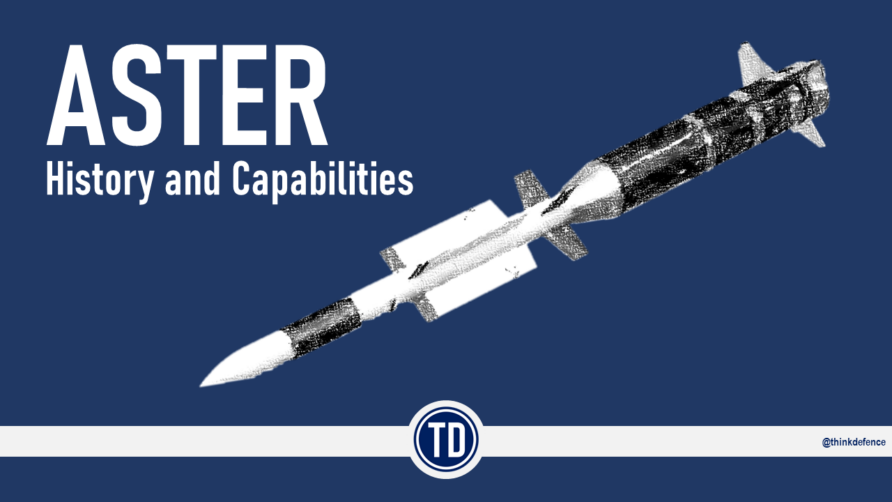
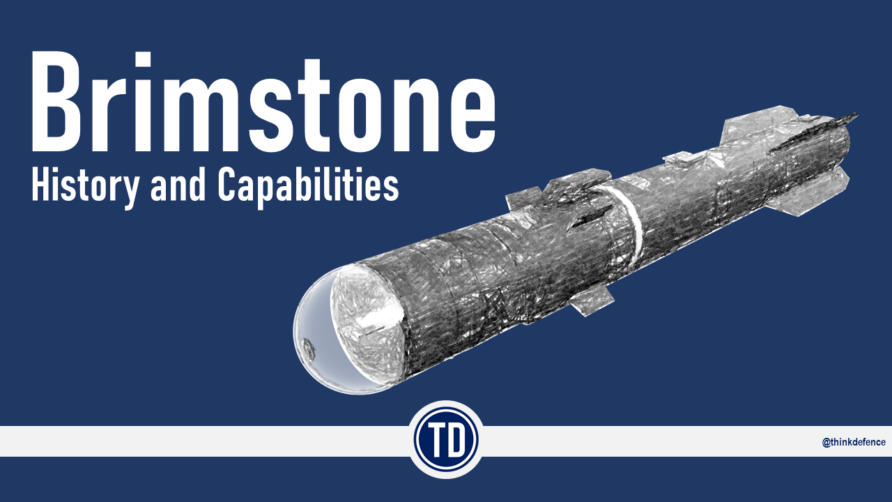
I’d suggest they didn’t get the recognition because they assiduously avoided it. In 2011, as Publisher of the magazine that was Military Technology, I tried to commission an article on Team Complex Weapons, only to be instantly and definitively shut down on the subject – by MBDA iirc…
“There is no doubt SDB-II has less capability, it is a glide only weapon and thus has a lower time to target (which enables the launch aircraft to ‘get the f**k out of dodge’ sooner) and longer range (greater stand-off distance).”
I think there’s an accident in this sentence somewhere.
“TDWGesellschaft für verteidigungstechnische wirksysteme mbH (TDW GMbH)”
That’s “TDW Gesellschaft für verteidigungstechnische Wirksysteme mbH (TDW GmbH)”.
I wonder what’s the point of such munitions. Yes, they are multi-role, but the costs lead to small stocks, which in turn limit such munitions to high value targets.
Imagine a supply convoy on a road, 50 15-ton lorries, all exposed. All of them could easily be replaced by civilian lorries within days. What air force would expend missiles such as Brimstone or SPER3 on this in a large-scale conflict?
The more expensive (and thus rare) the air/ground munitions become, the less relevant they become for most actual targets.
Missing your tweets
Thanks Sven, good spot, I meant for the SPEAR aircraft being able to remove itself sooner, will update. On the TDW thing, I actually copied it direct from the MBDA website!
I also wonder about the target value v munition cost equation, we see them in promotional materials being used to attack low-value targets but you will note the later videos have switched from that to SAM launchers, radars etc. I can certainly see value in these, but only if we have a choice at the lower/cheaper end as well. For all the hype that Brimstone/Hellfire gets, the most common munition used by UK Apache’s in Afghanistan was by far away the CRV-7 unguided rocket, and latterly from Typhoon, the Paveway IV.
Stephen, thanks for that, interesting how things might have changed since
David, cheers!
Great read.
Interesting point about the cost and limited inventory constraining use against low value targets. Presumably, once the air defences are neutralised, cheaper and less complex munitions can be used. Horses for courses.
TD, I am a continental-minded guy and suppose that the ultimate form of air supremacy is a tank on the runway. The air forces of today seem to have largely forgotten about the option of influencing major land warfare campaigns with battlefield interdiction (attacks on the moving vehicles, not just bridges).
I didn’t get “the bunker-busting craze of the 1990’s already. Suddenly all air forces wanted bunker-busting munitions. I suppose they might also work against some types of bridges, but I simply don’t see terribly many targets for bunker busting missiles even counting bridges. Simple hardened aircraft shelters don’t require dedicated bunker busters; a direct Mk.82 or SDB hit is enough.
The NATO air forces’ targeting preferences / fashions are begging for an explanation.
A nap-of-the-earth-flying ancient A-7 Corsair II laden with two dozen cheap Mk.82s seems more useful to me than most of the €/$ 100+ million types with their smart munitions of today.
Maybe we just need to develop a dispenser container filled with dozens of daylight camera-equipped cheap autonomously targeting bomblets?
S O – I’d say that you’re looking at it the wrong way around. Why is there a need to blow up 50 lorries, if that’s all they are?
If it’s 50 lorries however moving a million gallons of fuel to resupply an armoured division poised to counterattack, then why not? Yes, they can be replaced tomorrow but that may well be too late. If we’re just randomly blasting at enemy supply convoys in their rear without much in the way of a specified purpose, then we should probably be finding something better to do with our very finite number of expensive strike aircraft.
Hi there, I am trying to get a hold of someone at THINK DEFENSE to get permission to use a Bailey Bridge photo from your website in a HABS (Historic American Building Survey). I sent an email last fall but got no response. Could you please contact me? Thanks.
Julie, apologies for not responding, must have missed your email
I don’t really have any ownership of the images, but please feel free to use anything
I wonder how Brexit and the CTA have altered the arrangements for Team Complex Weapons and MBDA, if at all? Was such technology transfer baked into the CTA, or is it a different thing – more like a commercial contract?
Wondered that as well Dave, my gut feeling is they will plough on regardless
Granted that it is expensive, there do exist high value targets for the SPEAR3. I am now thinking of Finland’s HX fighter replacement and the Baltic Sea.
As of now, Finland does not have any anti-ship missile in use by the Air force. The SPEAR3 could be very effective against smallish warships in a constrained area.
The combination of EW missiles and multiple ‘plain vanilla’ missiles could overpower a warship’s defenses in a way unforeseen. The same, of course, applies to land targets.
But it remains to be seen what exactly Finland can afford. Finland is a small country with a limited budget.
‘The modular approach taken by Brimstone 2 and ASRAAM was also used on SPEAR’
I went to the internet because I remembered something and… found it at ThinkDefence:
“By 2014, the RAF’s stock of ASRAAM missiles were approaching their mid-life upgrade point but because MBDA were already in production with the Common Anti-Air Modular Missile and the two share a very high degree of commonality, they were able to simply replace the RAF’s stock with new missiles manufactured at MBDA’s new facility in Bolton at a lower cost than refurbishing them”
Brimstone £150k, CAMM £200k…
Two fifty?
Twitter has no content.
Seems like they’ve been pretty cagey about the size and capabilities of the warhead. It’s obviously smaller than SDB II. Is it merely Brimstone/Hellfire sized? HEAT? Penetrator? Anyone have any info?
Great Article & welcome back to Twitter I like this system and some of the capabilities it gives but in terms of a sovereign carrier Strike capability there are still huge gaps to fill.
I’m concerned it’s being sold as a panacea and almost a jack of all trades.
Excellent DEAD/SEAD general & medium level strategic targets protected by medium range SAMs as well as high value softer targets.
It is not an anti-ship missile neither in effect or approach. Except small vessels & certainly unlikely to be effective against large Russian/China vessels
It is not a weapon to destroy deep hardened C2 bunkers.
It is also likely more expensive than Brimstone for anti-armour and CAS meaning paveway will have to be used. Comparing capability & exposure time between the two means later is less than ideal
TLAM doesn’t exist in the numbers required & as far as I know is not in UK form completely analogous with Storm Shadow. If we’re serious about operations in the Far East then is AAR Typhoon realistic? I thought the whole idea of larger carriers was to further reduce reliance on land based aircraft?
The other concern & particularly applicable to Typhoon is that it doesn’t outmatch s400 in range or speed reliance will still be on F35b or Typhoon’s DAS.
In short great string to the bow but we need more & waiting 2030+ is in no way ideal considering Sea Venom’s long incubation period Vs the complexity of the future cruise missile(s) that seems a little optimistic
Or am I being too critical?
@Matt
A Battalion battlegroup consists of approx. 100 motor vehicles. Destroy any 30…40 of those and the battalion battlegroup is combat ineffective and has to withdraw.
Do this six times and a Russian invasion of the Baltics would collapse.
Meanwhile, sniping with SPEAR3 every single HVT such as bridges, hardened aircraft shelters, aircraft on tarmac, HQ bunkers, EW specialist vehicles, SAM radar in a 1,000 km radius of Warsaw would not really affect it.
@SO: if we want to destroy Russian battlegroups, some MLRS terminally guided submunitions would do the job a lot cheaper and better :-)
I found this from Corporal Frisk’s blog, November 2019, by googling:
“…the SPEAR EW isn’t just a SEAD/DEAD weapon, but also plays an interesting role in air-to-air scenarios, where the ability to spoof enemy fighters create interesting tactical opportunities. While the SPEAR EW was officially unveiled only this autumn, it is part of the Eurofighter-package for HX.”
-This could mean that IF Finland chooses Typhoon, then that means a go for integration of Spear3 for Typhoon.
The Spear3 could tip the scales between the Rafale and Typhoon in the HX competition. However this is all guesswork on my part, I am not involved in HX in any way. Take with salt.
It’s another weapon that has come out of complex weapons programs that shows that sustained funding leads to highly innovate solutions. The one thing we hadn’t been best at that we need to work on is ensuring that it’s developed and integrate across a wide array of platforms. Army vehicles, Apache, unmanned surface craft, protector uav.
@WF:
Artillery strikes need completely different targeting data compared to aircraft on the scene, including a functioning and trusted radio link over 20+ km. Unguided MLRS rocket dispersion can very well exceed the sensor footprint of unguided submunitions, especially in range.
MLRS guided submunitions against lorry convoys are not a thing, the DPICM are banned, the GUMLRS is totally unsuitable to the task. MLRS maximum range is about 40 km unguided, about 80 km guided, and the big guided missiles (ATACMS and its successor design) are too expensive and have too long time of flight to hit road convoys.
A non-existing fantasy munition (with fantasy price tag) is not an answer to actual targets.
MLRS / SADARM was a thing more than 20 years ago. GMLRS has been a thing for more than a decade, and how much faster do you think artillery is compared with staging an airstrike?
Be aware the original ancestor of SADARM (still in service on 155mm artillery now) was designed to strike trucks back when the overall program was called Assault Breaker :-)
We seem to be obsessed with aircraft when so many of their roles are better done via missiles these days….
SADARM is not effective against lorries. The EFP hit may set the vehicle on fire, but this fire could be extinguished by the crew rather easily. Furtehrmore, SADARM did not have such a great career because it tended to shoot behind the moving target vehicle or at best hit its engine instead of turret; a 80 kph lorry would hardly ever be hit in the cab.
Smart submunitions against soft vehicles would have to go for a direct impact, likely use folding fins and possess a 2+ kg explosive charge for effect.
The cluster munitions ban (followed by the U.S. despite not being ratified) allows no more than 10 submunitions (of at least 4 kg each) per munition. The ban’s criteria are de facto binding for political reasons, export reasons and because otherwise only one NATO country could use it.
In other words; such munitions are fictional. SADARM is no lorry killer.
We need a weapon to take out cheap targets….£200,000 to hit a Hilux truck is crazy
Excellent , missiles cost £000’000s , launched from F35s costing £00m…to take out some guys in a cheap Toyota 4×4 . Is this really what defence is all about , or just what the arms industry wants to sell the taxpayer. The mission video looks like we are arming ourselves up to fight the war we just lost .
SPEAR is being offered to Finland along with Eurofighter Typhoon. Key.Aero article says:
MBDA’s new family of Select Precision Effects at Range (SPEAR) family of air-to-ground/surface munitions are also featured in the selection. The Typhoon will be able to carry up to 12 SPEAR weapons when the munition is integrated onto RAF examples later this decade, which would be the same for Finland.
Link to original article:
https://www.key.aero/article/uk-outlines-final-eurofighter-offering-finland
Interestingly, ASRAAM is also offered. The idea is probably that Finnish Typhoons would fly with the same kit as RAF Typhoons.
Listen up folks, this is huge news. Saab is right now on Twitter and talking about their offer to Finland. SPEAR is included with the Gripens. RBS-15 is not mentioned.
TD – Worth keeping an eye out for the MRUSW…(I suspect you've clocked it already)
https://breakingdefense.com/2022/11/uk-researches-new-affordable-precision-munition-with-ukraine-in-mind/
From what little we know…everything points to a Spear variant. Basically SpearGlide without the MMW radar and with a penetrating warhead. Essentially a UK SDB-1 equivalent. The bit about mass and 4 per F-35B bomb bay in particular stands out…
A 'SpearSimple' (or 'Spear Value Engineered' in old money)…would make an awful lot of sense. Spear, Spear-EW, SpearGlide and 'SpearSimple' is a compelling range of compatible munitions, and definitely in the spirit of Complex Weapons portfolio.
And the RAF definitely needs cheaper mass….can't be slinging Storm Shadow, Paveway IV or Brimstone at everything…
The only further variants of Spear that I can see making sense (beyond adapting sensors to different target sets, like shipping) is a 'SpearRecon' with an EO/IR payload as an attritable recon asset (for BDA or well defended targets) or a 'SpearLoiter' utilising a longer wing and IC engine with propellor for long range/loitering either for attack or recon.
Funnily enough, was reading about this week as part of the general update process. Think you are right, a low cost glide weapons, although MBDA do have a few products in that area as well
TD – Another one to watch for….
At recent Aviation and Arms fairs MBDA have been showing a new design for Land Precision Strike. It no longer appears to be a CAMM style body (albeit 178m rather than 166mm) with a Brimstone seeker head or EO/IR head. Instead they appear to have changed it to a Spear derivative with wings and turbine engine….only a lot longer (>3m long, with normal Spear being c1.8). It's got a single stage rocket booster to get it to speed/altitude. Likely to carry a larger warhead, and at least double the fuel (probably more). Think it will have at least 250km range….
MoD also started talking about having moving target engagement capability from M270A2 at >150km range at the same time which, initially, looked to be related purely to the LRAE demonstration programme. But which now appears to allude to the switch from CAMM style to Spear variant…
I suspect it would be hot launch though from M270A2, can't see evidence of cold launch with turnover pack…so no integration with Naval Sea Ceptor VL, suspect no chance of use on Land Ceptor or Boxer either…..but…..you could call it Spear-ER and put 2 in each bay of an F-35 and get a missile with c400km range….the hard part of the integration would already be done…
I do hope, probably in futility, that they still do the CAMM/Brimstone mashup though…so many possibilities for that…
Thanks DN, this one is in the pipeline for a refresh, bloody MoD :)
Given latest F35B integration date is 2035. HMG should integrate to Typhoon immediately. The US is doing its usual protectionism and SDB, JAGM & AIM260 will all be integrated to F35B before SPEAR3 & METEOR. In addition LM are promoting US weapons deals to HMG with the intent of destroying any competition.